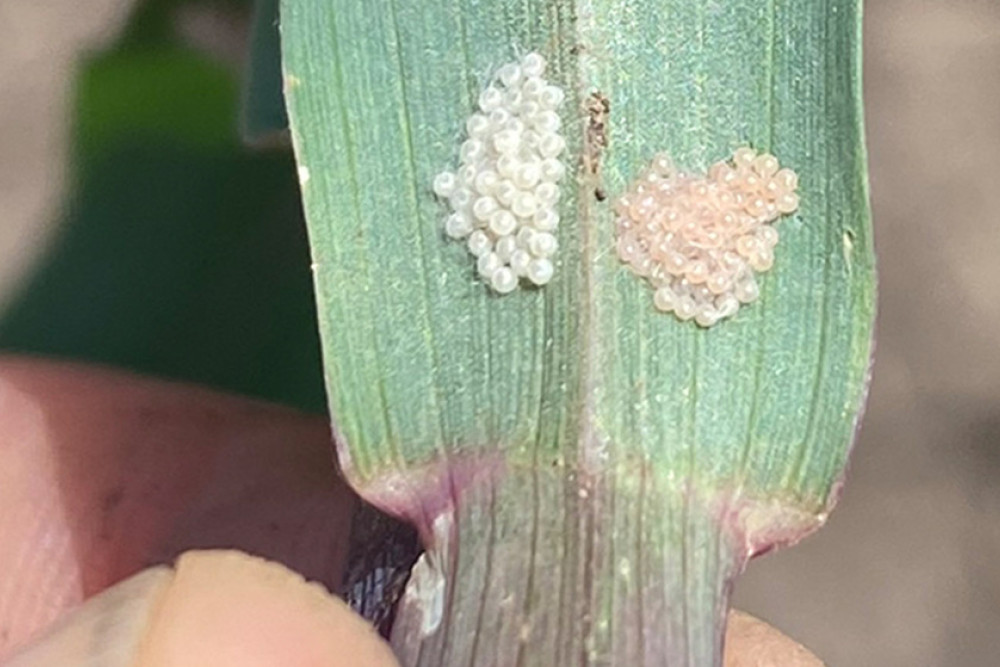Agricultural
16 November, 2022
Fall Armyworm encroaching on Eastern Downs
The latest update on Fall Armyworm (FAW) numbers indicates that the pest is slowly spreading across the Darling Downs and is getting closer to the local area.

Information collated for the Beatsheet publication, prepared by the Queensland Government in conjunction with Grains Research and Development Corporation (GRDC) indicates that very low densities of FAW have already been observed in corn and forage sorghum crops on the Western Downs, and Eastern Downs, as well as in the Macintyre and Lockyer Valleys.
Infestations reported are largely patchy in distribution, and egg masses have been difficult to find.
With the warmer conditions, there is evidence of increasing FAW activity with more egg masses and an increased density of small larvae across fields.
Farmers growing corn or sorghum (for grain or silage), or millet, have been told that it is imperative that they monitor closely for FAW.
Not all caterpillars in corn, sorghum and millet will be FAW - high native armyworm and helicoverpa pressure in winter cereals is likely to result in infestations of these species in corn, sorghum and millet too.
This highlights the importance of actually sighting larvae, rather than assuming that all damage in these crops means you have an FAW infestation.
Distinguishing FAW larvae from those of common armyworm and helicoverpa is possible, particularly with experience and with larger larvae.
FAW eggs can be difficult to find – but easy to recognise - the eggs are typically deposited in clusters (with or without scale covering) on the underside of lower leaves of small plants (<V4).
Growers looking for eggs should focus on the cotyledon and the first and second expanded leaf, and towards the base of the leaf.
If you can’t find egg masses, you might see signs that there have been egg masses that have hatched and the larvae dispersed.
It may take as little as three to five days for an egg mass to hatch and larvae to move from exposed feeding site.
Larvae consume the egg shell when they hatch, so there will be nothing of the egg mass left to see except signs of early instar feeding.
If larvae have dispersed very quickly from the egg mass site, then there may be no sign of the egg mass at all.
Second and third instar larvae, and the windowing (feeding damage) they cause is easier to see on newly expanded and furled leaves in the whorl.
There are other things to look for than just FAW eggs and larvae - there can be a surprising number of natural enemies present when monitoring for FAW. While predators do not leave much evidence behind, visual signs of parasitoid and pathogen activity can be quite common in some fields.
Just counting plants with feeding damage is not a reliable way to determine the extent of an infestation - a relatively small proportion of larvae that hatch will survive and establish in the whorl of a plant.
Of course, the higher the pressure/number the higher the number establishing.
There is no substitute for pulling plants apart to assess an infestation.
Dissecting the plant provides information on the number of larvae per plant (and what species), and the size of the larvae – both very important bits of information for making decisions about the management of the infestation.
The size of the larvae that you find will inform your understanding of the risk of loss in the crop.
If only large (4th–5th instar) larvae are found, then the amount of feeding damage is at its maximum, and larvae may complete development before a treatment can be applied.
The survival of larger larvae is also likely to be high, compared with the survival of larvae - if smaller larvae are found, or a mixture of eggs and larvae, then the risk of loss is higher because damage will continue to occur as these eggs and larvae develop.


